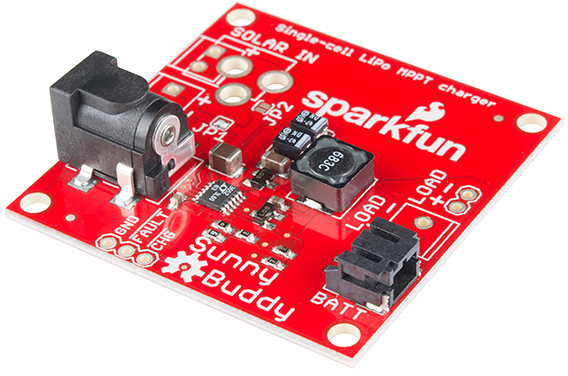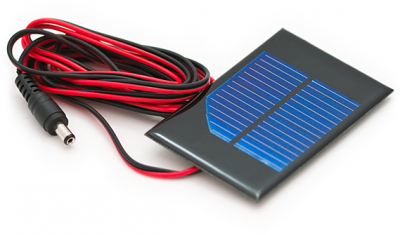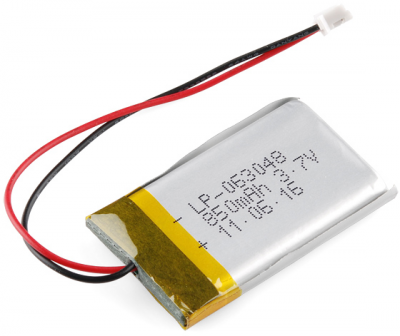Sunny Buddy Solar Charger Hookup Guide
This Tutorial is Retired!
This tutorial covers concepts or technologies that are no longer current. It's still here for you to read and enjoy, but may not be as useful as our newest tutorials.
View the updated tutorial: Sunny Buddy Solar Charger V13 Hookup Guide
Introduction
NOTE: There is a newer version of this guide. This guide is only for the Sunny Buddy V10. Check the back of your board to see which version you have.
The Sunny Buddy is a small maximum power point tracking solar charger for single-cell LiPo batteries.
This tutorial will help you understand what the Sunny Buddy is, why it's useful, and how to use it.
What You'll Need
The Sunny Buddy can't do anything without a supporting cast. Pair the Sunny Buddy with these buddies to make it work:
- Solar Panel -- Most panels should work, just make sure they produce an output voltage between 6-20V. Our small, large, and huge panels will all work. Panels with a center-positive barrel jack (like those) will be able to plug directly into the Sunny Buddy.
- LiPo Battery (single cell) -- The Sunny Buddy is intended to charge a single Polymer Lithium Ion cell. LiPo's come in all shapes and sizes, we recommend you use one with a capacity greater than 450mAh (e.g. 850mAh, 1000mAh, or 2000mAh). Batteries like those, with a JST termination, will plug directly into the Sunny Buddy.
- A Load -- Your battery has to power something, right? Your load can be anything from an LED to an Arduino-powered robot.
Suggested Reading
Here are some other tutorials you may find useful before delving into this hookup guide:
- Batteries -- Check out the battery tutorial for some help understanding why the Sunny Buddy works only with LiPo batteries.
- Electricity Basics -- It may be useful to review how current and voltage combine to transmit power to a load.
- How to Power Your Project -- Solar power and batteries are just one of many ways to power your project. Make sure to consider all possibilities!


